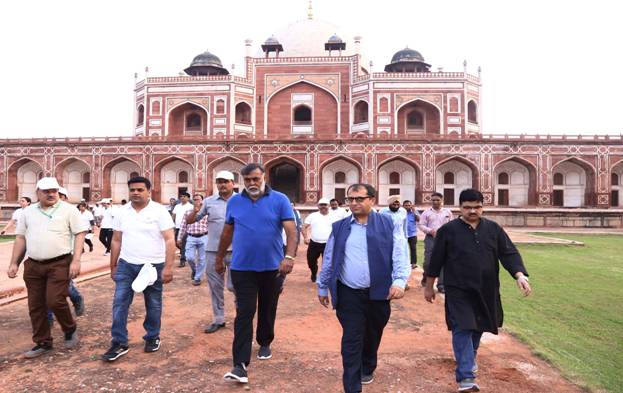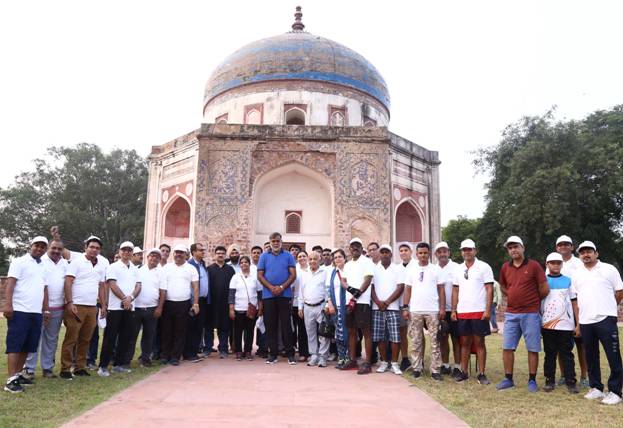As a part of Fit India Movement the Minister of State for Culture & Tourism (Independent charge), Shri Prahlad Singh Patel lead a morning walk at Humayun Tomb Complex today in New Delhi. Speaking on the occasion the Minister said that awareness regarding fitness lies in Indian culture and heritage and we must do some Yoga, exercise, walk or other related things for our better health in our day to day life. He also said that ‘health is Wealth’ and we can achieve our physical and spiritual goals only through a healthy body. The Minister urged all the citizens to participate in ‘Fit India Movement’ to make it a public movement.

Shri Prahlad Singh Patel also opened the entry for Nila Gumbad at Humayun Tomb Complex for general public during his visit. The Nila Gumbad is one of the earliest Mughal era structure and was Built in the 1530’s. This was built on an island in the Yamuna, and later, just abutting to it, when Humayun’s Tomb was built in the year 1569-70, Nila Gumbad and other adjoining structures were incorporated in the complex.

The entry to the Nila Gumbad, which derives its name from the turquoise blue tiles that cover its dome, has been made accessible to the public from inside the Humayun’s Tomb complex from today.
The glory of Nila Gumbad started declining in 19th century when the northern portion of the Nila Gumbad garden was taken over by the railway lines and Nizamuddin Railway station was built, abutting the monument. In 1980s, a road was built bifurcating Nila Gumbad from Humayun’s Tomb and later, the structure was occupied by a squatter settlement of over 200 jhuggis.
To bring back the structure to its lost sheen firstly, the inhabitants of the squatter settlement were relocated in 2004-05 and later in 2014, as per the agreements with the Railways the road bifurcatingthe monument from the Humayun’s Tomb was shifted, so as to allow the access to Nila Gumbad from Humayun’s Tomb.
In a massive exercise in over the last 5years, the landscape setting was restored and an alternate road was built. Also, with the missing of 15000 brick like tiles, the grandeur of the dome was completely lost. To bring back the sheen of the monument, kilns were established at the Humayun’s Tomb complex, youth from Hazrat Nizamuddin basti were employed, and the lost craft tradition was revived.
The geometric and artistic creations of the ceiling which had been hidden beneath several layers of whitewash and cement through the years were revealed and the missing sandstone lattice screens were also restored.
A part of land recovered from the Railways was redeveloped in a manner so as to recreate the part of the original garden surrounding the mausoleum.
Besides this during the conservation work, the archaeological remains of a ramp were also discovered. It is believed that this ramp was used to lift stone and other building material that arrived here on boats - for the construction of Humayun’s Tomb. Over 10 feet of accumulated silt was removed from alongside the eastern wall of the Humayun’s Tomb to restore the levels of the original riverbed. This revealed the northern arcade of Nila Gumbad – which was then reconstructed.
The conservation work at the mausoleum was done by Aga Khan Trust in partnership with Archaeological Survey of India.
In 2017, Nila Gumbad was declared by UNESCO as a World Heritage Monument as part of the extended Humayun’s Tomb World Heritage Site.
*****
NB/AKJ